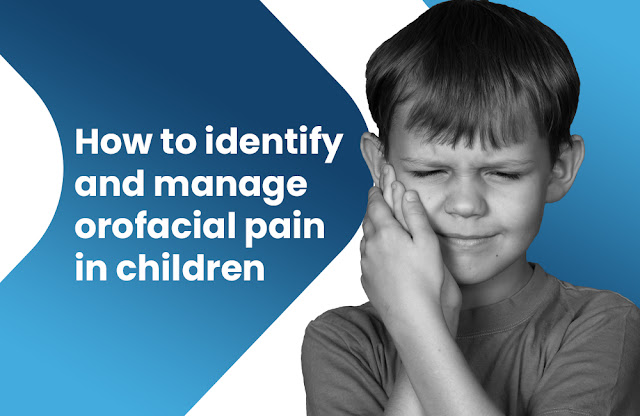How to identify and manage orofacial pain in children?
Pediatric chronic orofacial pain is an umbrella term for orofacial pain in children. This condition causes pain in the head, face, and neck. Besides, it lasts more than three months in patients below 18 years. Thus, orofacial pain can be challenging to diagnose and manage in children.
But, understanding the pain in children is essential for parents and caregivers. Early intervention and appropriate treatment can ease this pain. Proper diagnosis can promote healthy and pain-free childhood.
Read this blog to learn how to identify and manage orofacial pain in children. It will ensure their well-being and oral health.
What is Orofacial Pain?
Orofacial pain and discomfort can originate from the mouth, face, and jaw. The causes of orofacial pain in children are many. It includes dental problems, jaw joint disorders, sinus infections, muscular tension, etc.
Diagnosing Orofacial Pain in Children:
Identifying orofacial pain in children requires careful observation and communication. Here are some steps to help in the diagnosis process:
Listen to the child:
Empower your child to express their discomfort and any specific areas of pain. Active listening provides valuable insights into the nature and location of orofacial pain.
Observe physical symptoms:
Examine your child's face, jaw, and mouth for visible signs such as swelling or sores. Notice if they are complaining of difficulty opening their mouth.
What are the Common Causes of Orofacial Pain in Children?
Here are some of the common causes of orofacial pain in children. Understanding these will help in managing and treating the condition.
- Dental issues: Cavities or tooth infections can cause significant discomfort and pain in children.
- Temporomandibular joint disorders (TMJ): TMJ can lead to orofacial pain, jaw clicking, difficulty chewing, and headaches.
- Sinus infections: Sinus infections can cause facial pain, especially around the cheeks and forehead.
- Muscular tension or bruxism: Excessive teeth grinding can strain the jaw muscles and lead to orofacial pain.
- Stress management: If the orofacial pain is due to stress, relaxation techniques or counseling may help manage the condition.
When to consult a dental or medical professional?
If your child experiences recurring orofacial pain, you should seek immediate care. A dentist or pediatrician will examine it to identify the underlying cause. Thus, recommend the appropriate treatment.
Conclusion:
Orofacial pain evaluation and its diagnosis are complex in children. Firstly, it's not easy to communicate with children. They are not able to describe the symptoms of their condition. Thus, orofacial pain in children is a concern in pediatric dentistry. But, by visiting an orofacial specialist early, you can find a solution. An orofacial specialist will ensure your child is in safe hands and feels comfortable during the treatment.
About Professor Sam Wise (DDS, MOM, MSc, and MDS) :
Professor Sam Wise (DDS, MOM, MSc, and MDS) is a leading dentist in Texas, United States. He is a leading orofacial specialist who offers personalized treatment plans. Professor Sam Wise has more than 15 years of experience in aesthetic dentistry. He is a go-to dentist for the treatment of orofacial pain in children. Schedule an appointment today.



.jpg)
Comments
Post a Comment